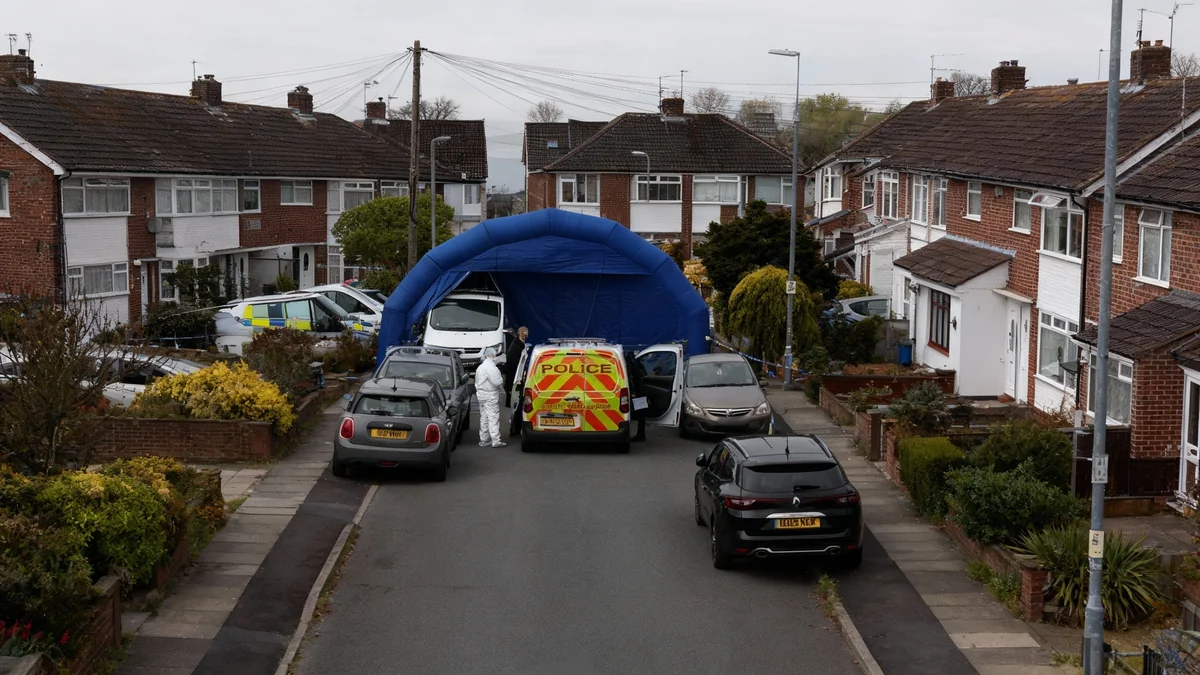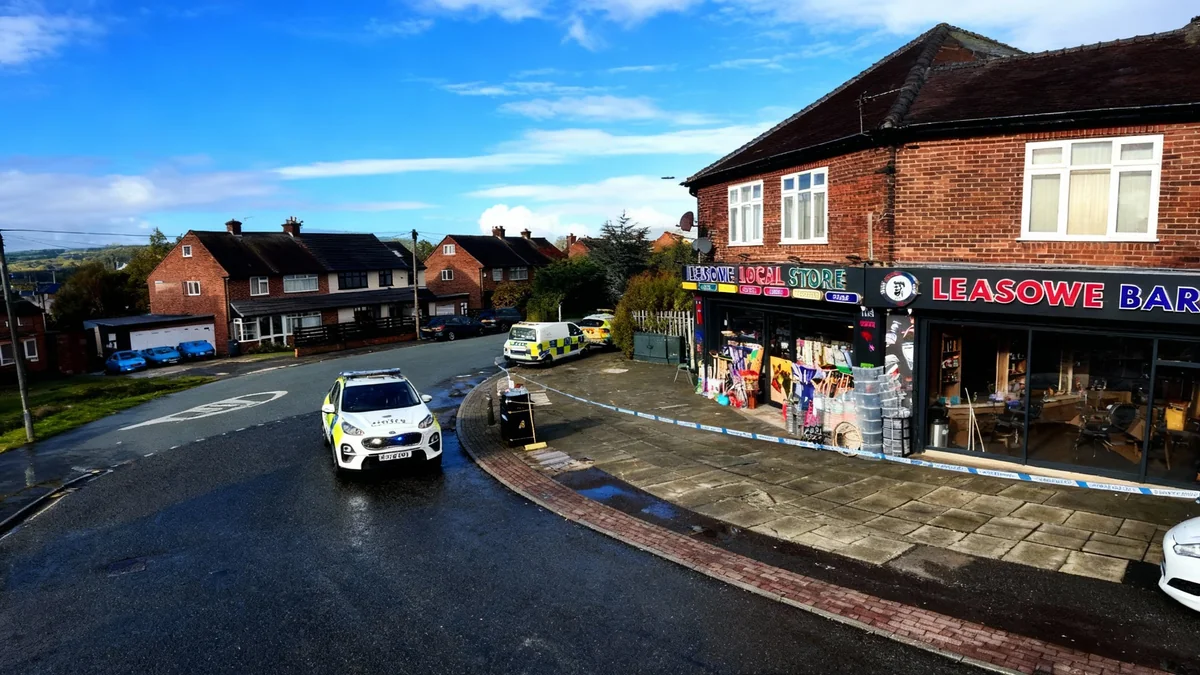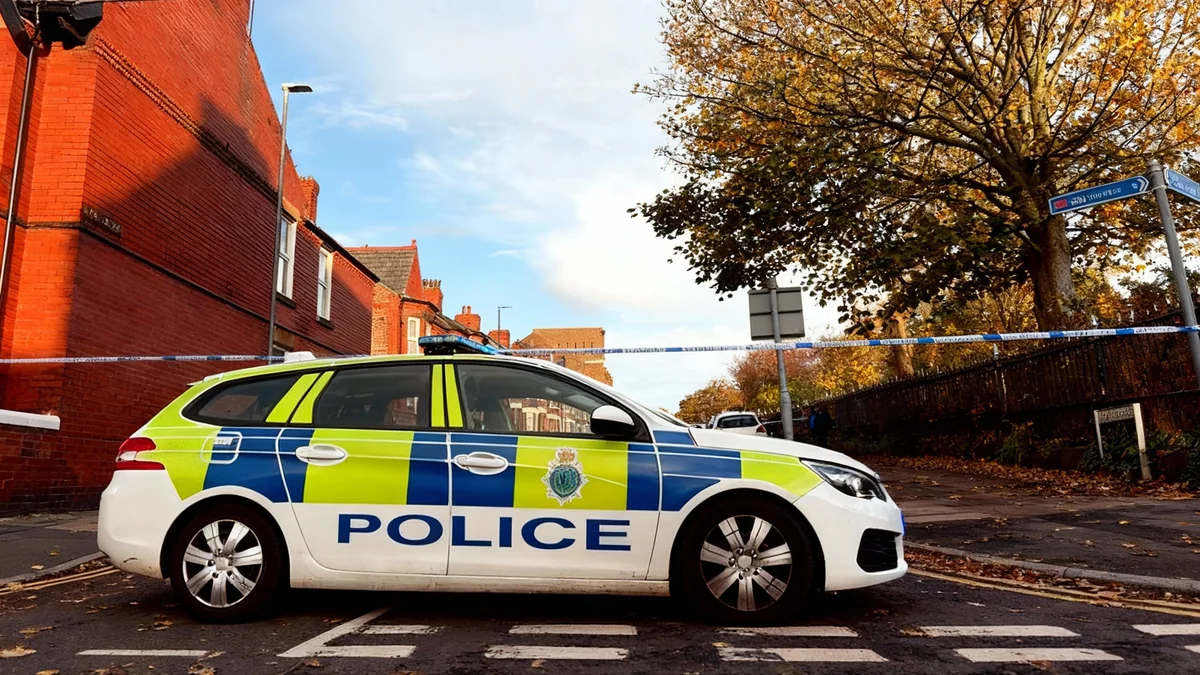Merseyside Police have released new photographs revealing the catastrophic damage inside Liverpool's historic Woolton Hall following a major fire. The images show the near-total destruction of the Grade I listed building. Authorities have also confirmed that a 14-year-old girl arrested on suspicion of arson has been conditionally bailed as investigations continue.
Emergency services were called to the Speke Road property on the evening of Tuesday, August 19, to tackle a blaze that engulfed the structure, causing its roof to collapse. In response to the ongoing danger, police are issuing a strong warning for the public to stay away from the structurally unsound site.
Key Takeaways
- New police photos show the devastating aftermath of the fire at Woolton Hall.
- A 14-year-old girl arrested on suspicion of arson has been released on conditional bail.
- Merseyside Police have issued an urgent safety warning due to the building's structural instability.
- The historic hall, dating back to 1704, was already declared an "immediate risk" by Historic England in 2021.
Police Reveal Extent of Damage
The newly released images from Merseyside Police provide the first official look inside Woolton Hall since the fire. They depict a scene of complete devastation, with the building's interior reduced to rubble and charred remains. The fire's intensity was such that it tore through every part of the historic structure.
Structural damage is extensive. Photographs show that most of the timber beams and lintels that supported the floors have been completely incinerated, leading to widespread collapse. Several of the building's original sandstone walls are visibly leaning and are considered at risk of toppling. The fire also destroyed the majority of the windows and led to the collapse of the roof, leaving the interior exposed to the elements.
The building, which has been derelict for decades, is now in an extremely perilous state. The images confirm that what was once a grand country house is now a dangerous ruin.
Investigation and Public Safety Warning
Enquiries into the cause of the fire are ongoing. Merseyside Police confirmed that a 14-year-old girl was arrested on suspicion of arson in connection with the incident. She has since been conditionally bailed pending further investigation.
Alongside the criminal investigation, authorities have launched a public safety campaign. Police have received numerous reports, both before and after the fire, of youths trespassing on the property despite its hazardous condition. Temporary fencing has been erected and ground-level access points secured, but some individuals have continued to ignore warning signs.
In response, officers are conducting increased patrols in the area to deter trespassers. Community Inspector Michelle Ingram issued a direct appeal to parents and guardians.
“More importantly than that, those entering Woolton Hall in its current state are putting themselves at very serious risk of injury. With rubble, unstable floors and damaged beams and girders as well as exposed wiring, the site is extremely dangerous and I want to appeal to parents and guardians to discourage their children from going anywhere near it for their own sake.”
Inspector Ingram also noted that Liverpool City Council is collaborating with the building's owners and the police to secure the site and mitigate the dangers.
A Building on the Brink
Even before the fire, Woolton Hall was in a precarious state. In 2021, Historic England placed the Grade I listed building on its Heritage at Risk Register, classifying it as an "immediate risk" due to severe decay and neglect.
A Landmark with a Storied Past
Woolton Hall holds a significant place in Liverpool's history. The original structure dates back to 1704, when it was built for the Molyneux family. It was substantially renovated and expanded in the 1770s by the renowned architect Robert Adam, who added many of its distinctive features.
Over its 300-year history, the hall has served many purposes:
- A grand country manor for notable owners, including the Earl of Sefton and the Liverpool shipowner Frederick Richards Leyland.
- An army hospital during wartime, caring for wounded soldiers.
- A private school in the 1950s, after which it was eventually abandoned.
The Legacy of Robert Adam
Robert Adam (1728-1792) was a Scottish neoclassical architect who became one of the most fashionable and influential designers of his era. His work on Woolton Hall between 1772 and 1780 is a key reason for its Grade I listed status, which designates it as a building of exceptional interest.
A Future in Doubt
The future of Woolton Hall has been uncertain for many years. After falling into disuse, the building suffered from decades of decay and vandalism. Several proposals for its demolition were put forward over the years, but none came to fruition, largely due to its protected status.
Campaign groups and heritage organisations have long called for action to save the historic landmark. However, the immense cost and complexity of a full restoration have been significant barriers.
The devastating fire has now made the building's survival even more uncertain. The structural damage is so severe that it raises questions about whether any part of the original hall can be salvaged. The incident serves as a tragic chapter in the long and difficult story of one of Liverpool's most important architectural treasures.





